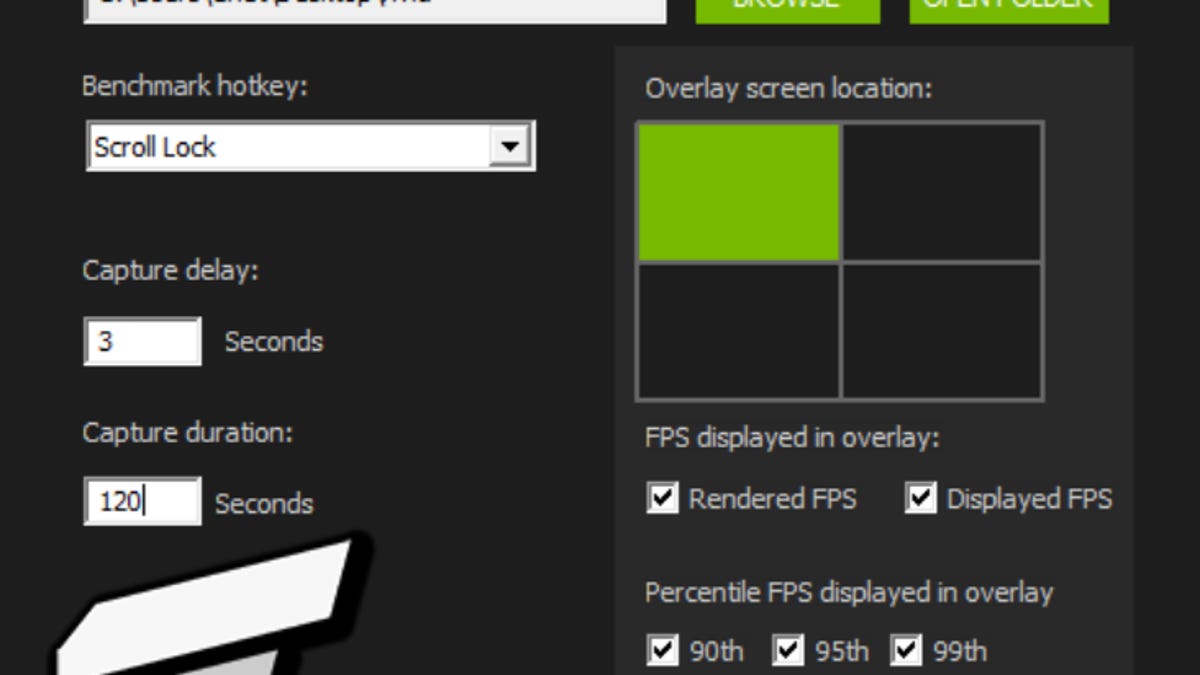Nvidia FrameView gives you frame rate bragging rights for any game
The company's new utility is designed to help quantify power efficiency under heavy loads, isolate the causes of sync issues like stutter, capture frame rate data for any game and more.
You can never have too many overlays -- that's got to be someone's motto. At least Nvidia's made one that seems pretty useful for trying to figure out why your $800 graphics card is more spud than speed demon.
The company's new FrameView utility could help answer some other questions too: Why cut scenes are rendering as if half the screen is in another time zone, for example. Or why you're convinced that the Blue Screen of Death must be a feature of the game.
FrameView, which has just entered beta testing in conjunction with the launch of its new series of RTX Super cards, can display and capture real-time, as-you-play performance statistics on the lag between the GPU and display. It can also determine what types of frame rates you should be getting, and where GPU and graphics card power-draw spikes (and by implication, possible overheating) might be overwhelming your system's ability to deal. No extra measurement equipment required.
It will even work with AMD cards, though it can't report the power statistics as granularly because of the way the software works. It'll need a little help from AMD to tweak the data it reports via its programming interface.
I only had a brief chance to give it a whirl -- long enough to see that the data it captures may offer some interesting insights. I could see where adaptive sync technologies such as G-Sync and FreeSync may be effective, where frame rates really are tanking and more.
It also captures data for random other applications running, as well. It dumped data for the Windows display manager (dwm.exe) and Slack, for example, but not Chrome .
The frame rate data is going to need some deeper diving, though, since it didn't quite jibe with the numbers I got for a quick benchmark run I got from Assassin's Creed: Odyssey. But beta is beta is beta, so there's plenty of time to fall down that bottomless data pit.


